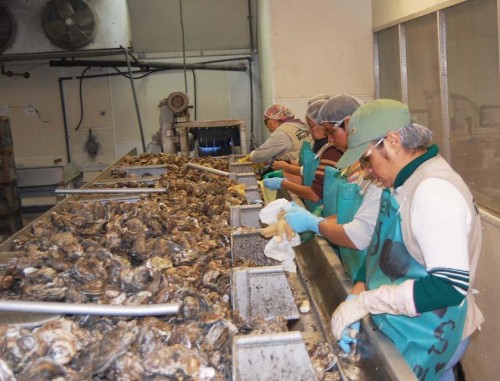Charles Schule
May 19, 2010Friday, May 21
May 21, 2010The life-blood of south Louisiana is its homegrown seafood.
For hundreds of years, Cajuns have filled their stomachs and their wallets with the aquatic gold that has made this area famous.
But after the oil spill off Louisiana’s coast April 20, many people in the seafood industry are left to wonder how much the spew will affect their livelihood.
No one seems to be sure of the true extent of the damage to local fisheries just yet, but there is one thing everyone can agree on – there will be a Louisiana seafood shortage this summer.
“With the number of closures to commercial harvesting areas, it’s created shortages in the market,” said Motivatit Seafood CEO Mike Voisin. “The product has not been available to be processed or sold to the restaurants.”
At press time, the Louisiana Department of Health and Hospitals had closed oyster-harvesting areas 14, 15 and 16 – all areas located in the southern reaches of the Tri-parish area.
Terrebonne areas 19 and 20 were re-opened by DHH Monday after being closed the day before.
Voisin said the effect has already been quite noticeable with the passing of Mother’s Day Weekend, the weekend with the highest rate of eating out all year.
As for what types of seafood will be most predominately affected in local restaurants, the particular restaurant’s supplier may have a lot to do with that.
Jacob Callais of Café Oceania in Golden Meadow buys seafood from local fishermen, a strategy that keeps his prices down, but may limit the types of seafood that will be available to him in the near future.
“I’m thinking oysters are going to be the first thing to go and then shortly following that probably shrimp,” said Callais. “Fish is kind of hard to say, because they’ve got a lot of coastline they can get that from.”
Callais touts his restaurant has always used fresh oysters, but the oil spill may cause that to change.
“Whenever [oyster fishermen] hit a slow time, they’ll still shuck the oysters, but they’ll freeze them. I usually don’t buy them frozen from them. I just take the fresh-shucked stuff, but that’s going to be what I’m going to have to do,” he said. “Pretty soon I’m going to have to resort to getting them frozen, because that’ll be all they have.”
Callais estimates he’ll have to begin buying frozen oysters and shrimp in about two weeks due to oil spill caused water closures.
In the meantime, he is happy local fishermen have not raised their price of about $50 for a gallon of oysters yet, keeping the prices down for the consumer.
However, that’s the particular fisherman’s discression, and Voisin hasn’t been so lucky.
“There has been some price increases at the dock,” said Voisin. “Probably about $15 to $20.”
When the local area runs out of oysters and shrimp, Callais said he will be forced to order from bigger retailers – costing Café Oceania more and therefore costing the consumer more.
“My main business strategy is to play it by ear, see what happens,” he added. “If I have to re-work my menu to go around it, I still do a lot of steaks and duck that probably won’t be affected by it.”
Buying seafood from these middlemen would level the price advantage playing field a restaurant located in Golden Meadow who normally buys straight from the local fishermen has over restaurants located further inland like Spahr’s Seafood.
With three locations in Houma, Thibodaux and Des Allemands, Spahr’s kitchen manager Ryan Gaudet said prices for them have already gone up.
“Oyster prices have gone up about $2 a gallon,” he said. “We haven’t seen any effects yet on shrimp, but we do know shrimp is going to be hard to get pretty soon.”
Gaudet added Spahr’s is currently stocking up and freezing local shrimp in order to continue serving it as deep into the summer as possible.
But if or when that supply runs out, Spahr’s will have to look for other options from different vendors.
“It looks like the big vendors are looking at the Atlantic and Northern Atlantic, and they’re looking oversees for Asian shrimp,” said Gaudet. “They’ll probably bring prices up pretty high, and it’ll be a different quality of seafood that most people aren’t used to.”
Gaudet said he has not seen an effect on inshore fish, crawfish or crabs yet, but if more areas close and the oil draws nearer, that could change.
“The concern is if [the oil] gets inshore, we’ll start to see potentially some challenges with the larvae, the juvenile fish,” said Voisin. “We’re in a reproductive cycle in the marsh right now, so that could mess up a year class of fish.”
But even with the threat of oil affecting local seafood, Gaudet said Spahr’s has actually been busier than usual.
“People might be worried that they might not be able to get seafood pretty soon, so they could be coming out and eating a little bit more,” said Gaudet.
Motivatit Seafood employees shuck oysters at the Houma plant. Oyster harvesting areas closed due to the oil spill could reduce the number of oysters they have to shuck in the near future. * File photo / Tri-Parish Times












